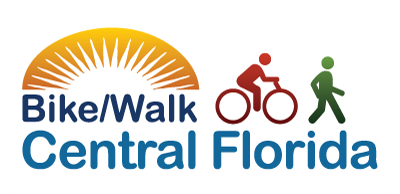
The City of Orlando is taking a transformative approach to bicycling and pedestrian infrastructure with quick-build projects. Quick-builds are flexible, low-cost projects that promise to deliver transportation safety enhancements at an accelerated pace. The interventions, also known as “tactical urbanism,” demonstrate that simple traffic changes help communities show the positive impact of new ideas while testing and implementing improvements on a faster timeline with less effort.
As a result of substantial research and several successful quick-build projects, the City of Orlando has developed a Quick-Build Guide to empower community and neighborhood organizations to initiate and implement projects that develop meaningful results in a shorter time.
The guide, based on best practices from other cities and lessons learned from projects implemented in Orlando, aims to serve as a valuable resource for other municipalities to use as inspiration and a road map for their pop-up projects to fill in the gaps in their walking and biking networks.




Samples of different project types that address safety needs (images from Quick Build Guide).
The guide features project life cycles and timelines for implementing planned demonstration projects in two to three months, compared with six months for a pilot and two years or more for a standard project. The flexible, low-cost approach allows for experimentation with safety designs and materials before fully accepting and funding capital improvements while building community support for new or unfamiliar projects.
Here are examples of quick-build projects in action:
- Project: Elevated platform on Amelia Street – In July, the Orlando Sentinel reported on a quick-build project on Amelia Street in Creative Village. An elevated platform was installed for bus passengers to embark and disembark above the bike lane. Because the bus no longer pulls over, cyclists can use their lane between the bus and the curb without interruption. This solves the problem of getting around the bus by entering traffic.
Planning and implementing the project took a much shorter time and cost less than a permanent project. The city says that the temporary platform was designed and approved in a few months and took about a week to install. The new traffic arrangement could become permanent if it proves valuable.
- Project: New bike path on Corrine Drive – A one-day pop-up bike path was erected in May on Corrine Drive to promote National Bike and Roll to School Day. It ran from Leu Gardens to Audubon Park Elementary School and used plastic poles to protect cyclists from vehicles. The quick-build was so well-received that the city has upgraded this project to a pilot program.
- Project: Pedestrian improvements at Michigan Street & Cayman Way – In partnership with the Best Foot Forward Pedestrian Safety initiative, the intersection of E. Michigan Street and Cayman Way in Orlando has seen several and easy engineering upgrades to improve the pedestrian experience, giving the crosswalk much-needed visibility to drivers and making it safer for pedestrians. These improvements included adding PED XING markings to the lanes, a long stop bar across the traffic lanes and a sign instructing drivers to stop for pedestrians. New curb ramps were added to shorten the crossing distance for pedestrians and make the intersection more accessible for people with disabilities. Other improvements included adding a pedestrian refuge island in the center median to create a safe place for pedestrians to wait to cross the other side of the intersection and painted bulb-outs that increase the turn radius for drivers so they reduce their speed.
Some of the benefits of utilizing the quick-build guide for pop-up projects include:
- Increased collaboration among private partners, communities and local governments
- Providing a less costly way to figure out which safety designs and construction materials work best
- Generating data that can help identify solutions to transportation needs in communities
- Filling gaps in pedestrian and cycling networks before improvements are finalized
- Giving residents time to experience traffic changes and give feedback before new designs become permanent
- Encouraging residents and interested groups opportunities to propose ideas and contribute to their development.
The quick build process allows “community members and decision-makers to experience new and unfamiliar designs that might sound too confusing, too radical or too disruptive to existing traffic patterns, before committing to making them permanent.”
Read the complete Quick Build Project Guide here.

